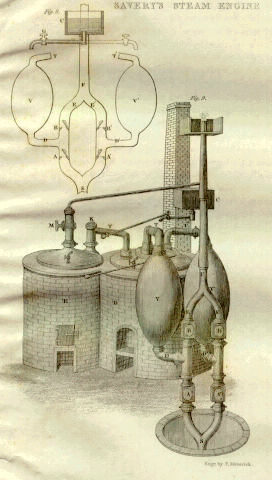16th C Pneumatics
Today, we invent vacuum. The University of Houston's College of Engineering presents this series about the machines that make our civilization run, and the people whose ingenuity created them.
The saying, "nature abhors a vacuum," had become a major contemplation object for natural philosophers in the early 17th century. They were holding it up to the light trying to see what it revealed about the nature of things. Nature demonstrated her abhorrence clearly enough when you used a drinking straw. Nature tried to get rid of the vacuum by driving liquid up the straw.
The story is told about a group of Florentine engineers trying to suck water up from a deep sump. Try as they would, they couldn't get the water to rise more than 32 feet. We see that atmospheric pressure couldn't push it any further; but 17th-century engineers had no way of knowing that. So they went to Galileo and asked what was going on. Galileo wryly replied that nature's abhorrence didn't appear to extend beyond 32 feet.
Actually, Galileo himself was trying to understand air pressure and vacuum. Three months before he died, in 1641, he'd hired a young assistant named Evangelista Torricelli to help him. Two years later, in 1643, Torricelli invented the barometer, and he estimated atmospheric pressure. We honor him today by naming the Torr, a unit of pressure, after him.
In the meantime, Otto von Guericke, an influential citizen of Magdeburg in Saxony, had become interested in the atmosphere. He'd studied the work of Galileo and Torricelli, but he was also involved in the administration of Magdeburg. In fact, he was elected mayor of the city in 1647. About this time he invented a vacuum pump, and what he did with it was pretty spectacular. In 1654 he gave the citizens of Magdeburg a remarkable lesson in the force of the atmosphere. He made two hollow hemispheres, 20 inches in diameter, that fit tightly together into a sphere. Then he pumped the air out of the sphere and let 16 horses -- eight on each side -- try to pull them apart. They couldn't, of course. It would have taken over two tons of force to separate the halves.
This was more showmanship than science; but it served its purpose. He'd shown the world that seemingly insubstantial gases could exert astonishing forces -- forces that could probably be harnessed. During the rest of the 17th century, all kinds of people struggled to find a way to make use of these forces. In 1698, Thomas Savery finally made a workable pump that used the vacuum created by condensing steam. Just a few years later, Thomas Newcomen showed us how to make a steam engine on the same principle, and -- suddenly -- the power-generation game was afoot.
Our big power plants generate 3,500,000 HP today. But they owe a debt to Guericke's 16-horse experiment.
I'm John Lienhard, at the University of Houston, where we're interested in the way inventive minds work.
(Theme music)
Lardner, the Rev. D., Hydrostatics and Pneumatics. American ed. Philadelphia: Carey and Lea, 1832, Pt.II, Pneumatics, Chapt. 3.
Usher, A. P., A History of Mechanical Inventions. Cambridge: Harvard University Press, 1970, Chapt. XIII.
This episode has been revised as Episode 1553.

(Image courtesy of the Burndy Library, Dibner Institute for the History of Science and Technology)
Otto von Guericke

(From Steam Engines Familiarly Explained, 1836)
Savery's 1698 steam pump